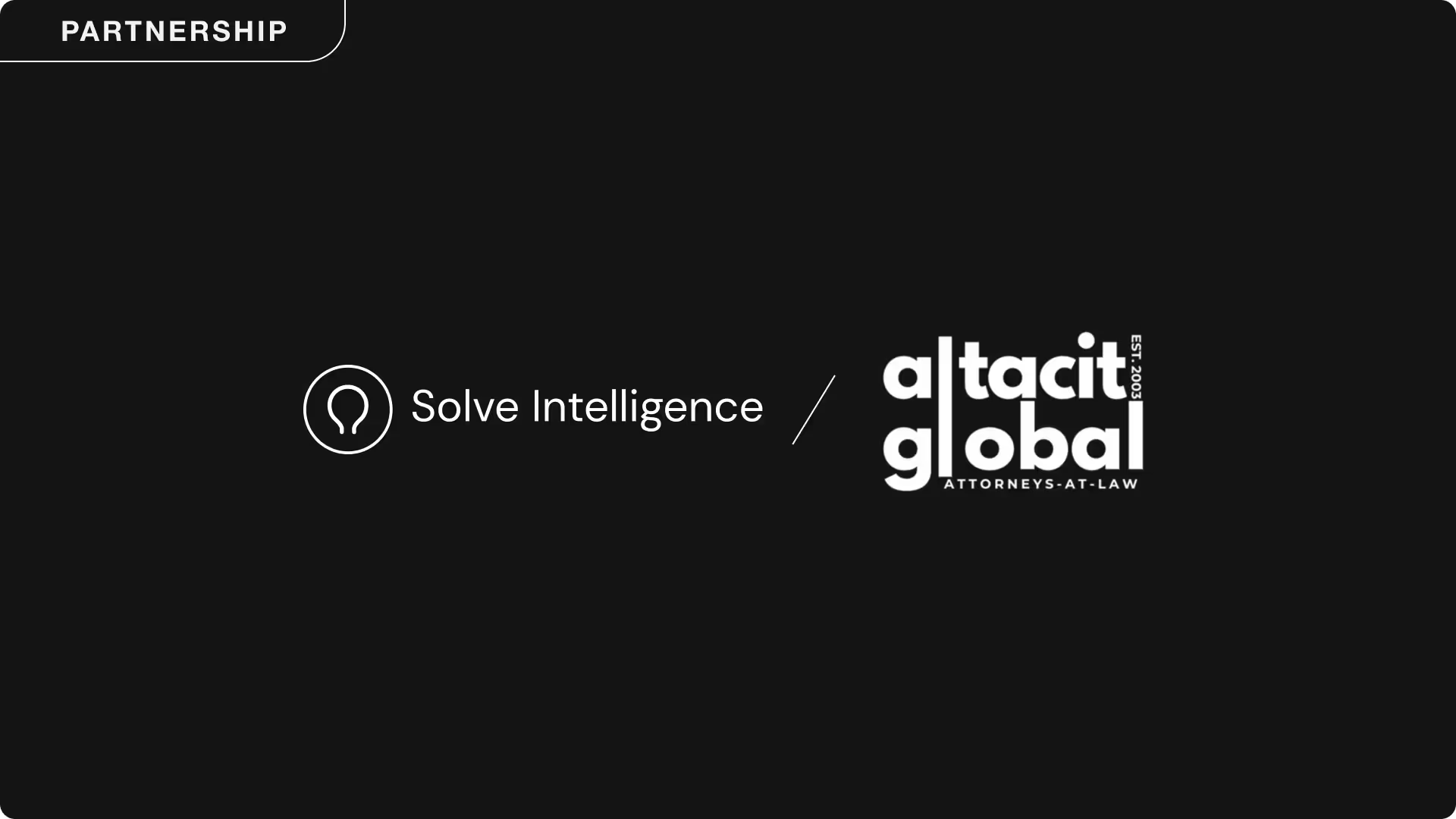Blog

Solve in Practice: Drafting Antibody Patent Applications
Learn how to use Solve's Patent Copilot to streamline sequence listings, claims, and compliance with ST.26 and USPTO requirements
.png)
Johnathon Webb to join Solve’s Customer Advisory Board
We are excited to welcome Johnathon E. Webb, Partner at Faegre Drinker, to Solve Intelligence’s Customer Advisory Board.

Solve Intelligence 2025: Year in Review
A glance at Solve Intelligence's milestones throughout 2025.

Chantal Whitfield Joins Solve Intelligence
We’re excited to welcome Chantal Whitfield to Solve Intelligence!
.avif)
The Power of Convergence: How Troutman Pepper Locke Is Unifying Patent Excellence With Solve Intelligence
Solve Intelligence is pleased to announce that Troutman Pepper Locke has partnered with Solve Intelligence to support their patent practice.

How HG Is Scaling Workflows While Preserving an Attorney-Led Standard of Quality and Commercial Judgment With Solve Intelligence
Solve Intelligence is proud to share that HG, a leading cross-Atlantic IP firm, has expanded their partnership with Solve Intelligence to give clients the choice of AI-assisted IP workflows.

Altacit Global Enhances Patent Drafting Workflows With Solve Intelligence
Solve Intelligence is pleased to announce that Altacit Global, a leading Indian intellectual property law firm, has chosen Solve Intelligence as their AI platform to help improve the efficiency and consistency of patent drafting workflows.
